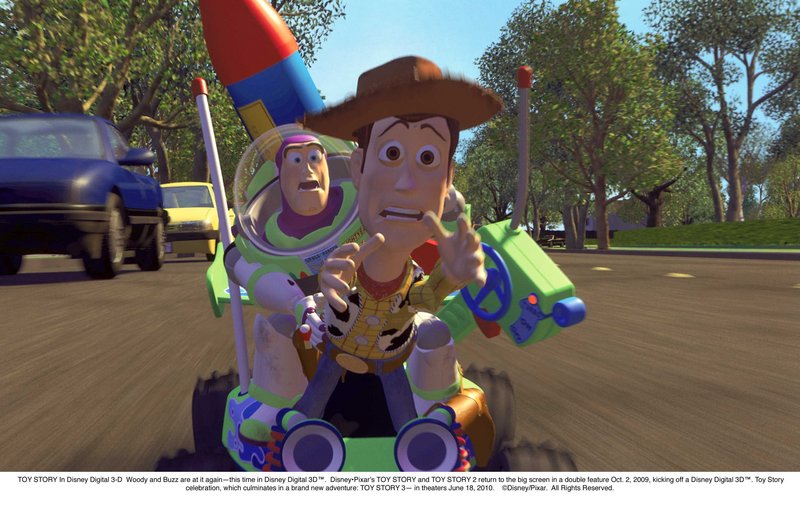If Hollywood learned anything at the box office in 2010, it’s to be grateful for the higher price charged for 3-D movie tickets.
Total movie ticket sales in the United States and Canada are projected to end the year slightly below last year’s record of $10.6 billion.
Many in the movie industry consider that good news, given the tough economy and the way the industry’s revenue can swing widely based on the popularity of its releases.
But from another angle the picture is more troubling. Although box-office revenue is almost even, the number of movie tickets sold this year will drop between 4 percent and 6 percent from last year, analysts say.
The difference is the higher price on tickets for 3-D movies, which accounts for the entire gap between attendance and revenue changes this year.
A full 8 percent of this year’s box-office revenue, or about $850 million, came from the additional $3 to $4 a ticket that moviegoers paid to see films such as “Toy Story 3” and “Clash of the Titans” with images that appear to pop out of the screen, according to research by Lazard Capital.
“3-D has driven up the box office, but it has also obfuscated the drop in moviegoers,” said Vincent Bruzzese, president of the motion picture group for research firm Ipsos OTX.
To many studio executives, persuading audience members to pay significantly more is as good as increasing the audience size.
“Focusing purely on headcount is nice if you don’t want to accept money,” said Jeff Blake, vice chairman of Sony Pictures. “But if money goes up while bodies go down, I’m not sure it’s necessarily a bad thing.”
This year marked the year that 3-D went from an infrequent event to a regular occurrence. Twenty films released nationwide at more than 1,500 theaters were 3-D, double the number in 2009. That included every animated movie and most effects-laden event films. And the blockbuster “Avatar,” released last December, sold the majority of its tickets early this year.
Although 3-D made a significant difference to the bottom line of some movies, it didn’t live up to the early hype of its backers. In early 2009, DreamWorks Animation Chief Executive Jeffrey Katzenberg, whose studio produced all its films in 3-D, told the Wall Street Journal that the technology would make the box office “a growth industry for the first time in many years.”
Nonetheless, returns on 3-D movies have been no more reliable than those on traditional ones.
Some, including “Alice in Wonderland” and “How to Train Your Dragon,” were hits; others, including “My Soul to Take” and “Alpha and Omega,” flopped. For some films, such as “Resident Evil: Afterlife” and “Piranha 3D,” the vast majority of receipts came from 3-D locations; for others, such as “Despicable Me” and “Cats & Dogs: The Revenge of Kitty Galore,” audiences largely opted for the traditional way.
With the exception of event movies such as “Avatar,” there was little evidence that 3-D made a difference in people’s decision to go to the theater.
“Given the fact that attendance is down and box-office is close to flat, you’d have to conclude that 3-D hasn’t brought people to theaters, but it has helped the grosses of some movies,” Lazard analyst Barton Crockett said.
As long as the number of 3-D movies keeps increasing and audiences choose to see many movies with plastic glasses, it’s likely that box-office receipts can remain stable or grow even if attendance continues to fall.
Copy the Story Link
Send questions/comments to the editors.



Success. Please wait for the page to reload. If the page does not reload within 5 seconds, please refresh the page.
Enter your email and password to access comments.
Hi, to comment on stories you must . This profile is in addition to your subscription and website login.
Already have a commenting profile? .
Invalid username/password.
Please check your email to confirm and complete your registration.
Only subscribers are eligible to post comments. Please subscribe or login first for digital access. Here’s why.
Use the form below to reset your password. When you've submitted your account email, we will send an email with a reset code.